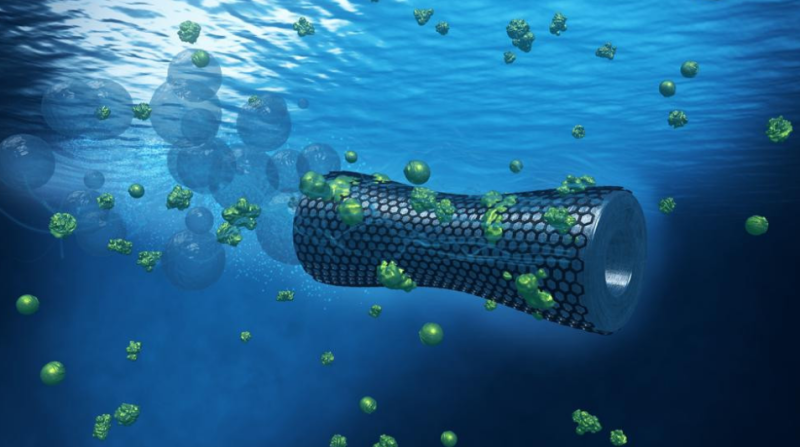It is estimated that by 2050 there will be more plastic waste than fish in the world’s oceans. Even worse, the prevalence of waste metals such as cadmium and lead in the water pose a threat not only to fish, but also to the survival of all species that eat seafood, humans included. Clearly it’s paramount that we find a way to reverse this tidal wave of pollution.
While scientists have been testing viable options for cleaning the rampant pollution from our oceans for years, a recent breakthrough has led to a promising new solution in the form of graphene robots. While it sounds like science fiction to conjure up a swarm of graphene coated nanobots capable of cleaning lead from wastewater, that’s just what an international team of scientists have recently done.
According to a paper published in the journal Nano Letters, these revolutionary nanobots have three key features:
- A graphene oxide exterior to absorb lead or other heavy metals.
- A nickel core that allows scientists to control the nanobots movement via magnetic field.
- Inner platinum coating that reacts with hydrogen peroxide to create an “engine” that self-propels the bots forward through the water.
Research found that a swarm of hundreds of thousands of microbots could remove 95% of toxic lead present in a body of water in just one hour. Even more impressive, these microscopic bots—smaller than a single strand of hair—can be reused after being stripped of the collected lead ions through an acidic bath. Further testing will focus on expanding their hoovering abilities to additional metal pollutants.
Describing his team’s exciting findings to Phys.org, Samuel Sánchez, a scientist at the Max-Planck Institute for Intelligent Systems in Stuttgart, Germany, had this to say:
“This is a new application of smart nanodevices for environmental applications. The use of self-powered nanomachines that can capture heavy metals from contaminated solutions, transport them to desired places and even release them for ‘closing the loop’—that is a proof-of-concept towards industrial applications.”
These self-propelled layered robots have potentially amazing applications that go far beyond the aquatic. Imagine bots being used for successful drug delivery and biosensing. This is not the first time graphene has been applied in ways that will revolutionize medicine, or in helping to clean the environment. Cleaning the ocean just proves that there really is nothing that graphene can’t seem to do, making it a great nanomaterial to add to your investment portfolio.

